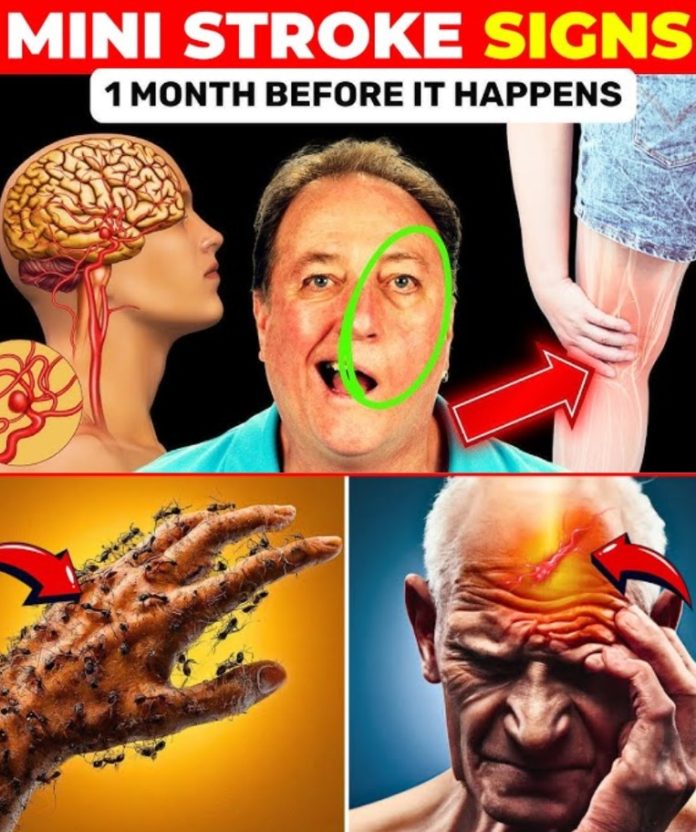In the realm of health, few events are as alarming as a stroke. Yet, many people remain unaware of the subtle warning signs that can precede a full-blown stroke. A mini stroke, medically known as a Transient Ischemic Attack (TIA), often goes unnoticed because its symptoms may disappear within minutes. However, this fleeting episode should not be underestimated; it serves as a critical alert from your body that a major stroke could be on the horizon. Understanding the signs of a TIA is essential for timely intervention and prevention of more severe consequences. This guide will explore what a mini stroke is, the silent signs to watch for, and proactive measures you can take to safeguard your health.
What Exactly Is a Mini Stroke?
A mini stroke, or TIA, can be likened to a warning shot from your body. It occurs when blood flow to a portion of the brain is temporarily obstructed, often due to a clot. Unlike a full stroke, a TIA does not result in permanent damage; however, it is a significant indicator that something is amiss. Alarmingly, many individuals who experience a TIA may go on to suffer a major stroke within a short time frame—sometimes as soon as 48 hours to three months later. Recognizing the signs of a TIA is crucial for preventing a more serious event.
⚠️ 8 Silent Signs of a Mini Stroke You Should Know
1. 🧠 Sudden Confusion or Slurred Speech
One of the most alarming signs of a TIA is sudden confusion or difficulty speaking. If you or someone nearby suddenly struggles to articulate thoughts or appears disoriented, it’s essential to act quickly. These symptoms can easily be mistaken for fatigue or stress, but they could indicate a serious issue.
2. 👀 Vision Changes
Changes in vision—such as blurred or double vision, or even temporary loss of sight—should never be dismissed. If these visual disturbances occur abruptly, they may signal a problem in the brain that requires immediate attention.
3. 🤕 Dizziness or Loss of Balance
Experiencing unexplained dizziness or difficulty maintaining balance can be a neurological warning sign. If you feel unusually light-headed or find it hard to walk straight, don’t ignore these sensations; they could be indicative of a TIA.
4. 💪 Numbness or Weakness on One Side
A hallmark symptom of a mini stroke is numbness or weakness that affects one side of the body. This could manifest as a weak arm, leg, or facial drooping. If you notice these signs, seek medical help without delay.
5. ⚡ Sudden, Intense Headache
An unexpected and severe headache that feels different from your usual migraines should raise alarms. This type of headache could be a sign of a serious underlying issue, such as a TIA.
6. ❓ Trouble Understanding Others
If you can hear people speaking but struggle to comprehend their words, this disconnect may suggest a temporary disruption in brain function caused by a TIA. This symptom warrants immediate medical evaluation.
7. 😐 One-Sided Facial Drooping
A simple test to assess for a TIA is to smile in front of a mirror. If one side of your mouth does not move or appears uneven, this is a major red flag that should not be ignored.
8. 💤 Extreme Fatigue or Tiredness
Unexplained fatigue that hits suddenly can often be overlooked, but it is a common symptom following a mini stroke. If this exhaustion accompanies any other signs, it is crucial to seek medical advice.
🚑 Why Early Detection Is Crucial
According to the American Stroke Association, approximately one in three individuals who experience a TIA will go on to have a full stroke, often within days. Recognizing these early warning signs and seeking prompt medical attention can be the difference between a full recovery and enduring complications. Understanding the urgency of these symptoms is essential for protecting your health and well-being.
✅ What to Do If You Suspect a Mini Stroke
If you suspect that you or someone else is experiencing a TIA, remember the FAST acronym:
- Face drooping
- Arm weakness
- Speech difficulty
- Time to call emergency services
Do not hesitate or “wait and see.” Even if symptoms seem to fade, it is imperative to call for help immediately. Every moment counts in the fight against stroke.
🛡 Can You Prevent a Mini Stroke?
Prevention is key when it comes to mini strokes. Here are some proactive steps you can take to minimize your risk:
- Monitor Blood Pressure: Keeping your blood pressure within a healthy range is crucial for reducing stroke risk.
- Control Blood Sugar and Cholesterol: Regular check-ups and lifestyle changes can help manage these factors effectively.
- Quit Smoking: Stopping smoking significantly lowers your risk of stroke and improves overall health.
- Adopt a Heart-Healthy Diet: Focus on whole foods, fruits, vegetables, and lean proteins to support cardiovascular health.
- Stay Active: Regular physical activity can help maintain a healthy weight and improve heart health.
- Manage Stress: Implementing stress-reduction techniques can have a positive impact on your overall health.
💬 Final Thoughts
A mini stroke may seem trivial, but it serves as your body’s way of signaling an impending threat. Ignoring these subtle yet critical signs can lead to life-altering consequences. By staying informed and proactive about your health, you can take control and potentially prevent a catastrophic event. Remember, awareness and swift action are your best defenses against stroke. Stay vigilant, and don’t hesitate to seek help if you notice any warning signs. Your health is worth it!










